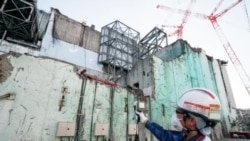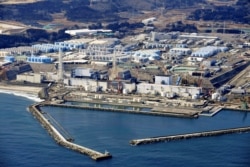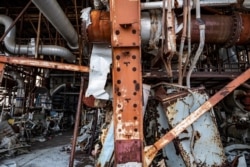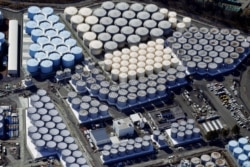On April 13, Japan’s government said it would begin releasing millions of tons of treated radioactive water from the disabled Fukushima Daiichi Nuclear Power Plant into the Pacific Ocean.
Fisherman, environmentalists and neighboring states reacted strongly to the decision. China also expressed its opposition.
On April 13, Chinese Foreign Ministry spokesperson Zhao Lijian expressed “grave concern” about the plan, arguing Japan should “refrain from wantonly discharging the wastewater before reaching consensus with all stakeholders and the IAEA (International Atomic Energy Agency) through full consultations.”
Deng Xijun, China’s Ambassador to the Association of South East Asian Nations, (ASEAN), also criticized the move, citing a study by Germany’s Helmholtz Center for Ocean Research (GEOMAR).
“The German Institute GEOMAR predicts that Japan Fukushima contaminated nuclear waste water dumped will pollute half of the Pacific Ocean in 57 days, adding that 3 yrs later, Canada & the U.S. will be affected by the nuclear radiation pollution,” he tweeted.
Deng also attacked U.S. Secretary of State Antony Blinken, who had thanked Japan “for its transparent efforts.”
Although others also have raised concerns about the water disposal plan, Beijing’s framing of the potential effects is misleading.
The GEOMAR animation shared by Deng is from 2012. It depicts the spread of radioactive material that leaked at the time of the disaster in 2011 and is not a projection of Japan’s current wastewater disposal plan.
China’s claim also lacks context.
Andreas Villwock, head of communications at GEOMAR, told Polygraph.info that the animation only shows the “transport of material into the Pacific basin.” However, he said the material would “rapidly dilute” because of the volume of water. “Locally the impact can be high but by no means over the entire Pacific basin,” Villwock said.
The effects of ocean-wide mixing over time have been demonstrated by comparing the Pacific Ocean after the Fukushima disaster to the Baltic Sea, which was affected by the 1986 Chernobyl nuclear accident in Soviet-era Ukraine.
The head of the GEOMAR research team behind the study, Claus Boning, said at least three times as much radioactive material flowed into the Pacific Ocean in March and April of 2011 than fell into the Baltic Sea in 1986.
"Nevertheless, the radiation levels we simulated in the Pacific (in 2012) are already lower than the levels still found in the Baltic Sea today, 26 years after Chernobyl,” Boning said.
Still, Villwock stressed that such radioactive materials pose a very real danger to the marine ecosystem.
On March 13, Rafael Mariano Grossi, director general of the International Atomic Energy Agency, welcomed Japan’s disposal plan.
“Controlled water discharges into the sea are routinely used by operational nuclear power plants around the world and in the region under strict safety and environmental standards and regulations,” he said in statement.
Zhao and others have challenged that view, arguing the Fukushima wastewater “is entirely different from the wastewater produced from the normal operation of nuclear power plants.”
It is true that the wastewater filtration process at the Fukushima facility removes some but not all radioactive isotopes.
The GEOMAR study notes that some of the radioactive isotopes released during the Fukushima incident (like cesium-137) are “highly soluble in seawater.”
Others, like tritium, a radioactive form of hydrogen that naturally occurs in trace amounts, “cannot be removed from the water like dissolved radionuclides (e.g. cesium),” the Thunen Institute of Fisheries Ecology said in a study.
The study found that, due to the relatively small level of discharges from the tanks in the 2011 meltdown, it is “very unlikely that direct or indirect radiation effects (from tritium) will be detectable in marine organisms.”
“A risk to consumers is also considered to be very low from a radiation protection point of view,” the study also stated.
According to the Health Physics Society (HPS), a U.S.-based nonprofit, “tritium is considered one of the least harmful radionuclides” on account of “its chemical properties and weak radioactive emissions.”
HPS noted that tritium is generally released and distributed into the environment “by the same process that transports water.”
This leads to the dilution of tritium, “largely preventing any accumulation in the environment,” HPS said.
Japan’s government said the tritium in the treated Fukushima wastewater is being diluted to 1,500 becquerels per liter — 1/40 of Japanese safety standard limits and well below World Health Organization guidelines.
Others argue that is misleading.
Friends of the Earth Japan said that despite claims that other radionuclides excluding tritium would be removed from the water, the true amount of radioactive material contained in the water is unknown.
The group further stated that “1,500 becquerels per liter was just a regulatory requirement,” and the 60,000 becquerel/liter standard set by the Japanese government applies to “tritium alone.”
In an October 2020 report, Greenpeace alleged that TEPCO’s Multi-nuclide Removal Facility (ALPS) at the Fukushima nuclear plant “was not designed to remove carbon-14,” which it said “has the potential to damage human DNA.”
A paper released by Japan’s Ministry of Economy, Trade and Industry on April 13 concedes that “Carbon-14 also cannot be removed through the ALPS purification process.”
But the paper argues that the level of carbon-14 contained in the water stored in the tanks is 1/10th that of the national regulatory standards, and will drop to 1/1000th that level “after dilution.”
James Conca argued in Forbes magazine that the carcinogenic effects of tritium at this point remain “hypothetical,” as the “adverse health effects from tritium have never appeared in humans or in the environment.”
He said that “the health risks of tritium-contaminated water are so low that all the countries of the world have no idea what regulatory limits to put on it.”
Other experts have endorsed the wastewater removal plan.
Michiaki Kai, an expert on radiation risk assessment at Japan's Oita University of Nursing and Health Sciences, told AFP “there is consensus among scientists that the impact on health is minuscule.”
He added that "it can't be said the risk is zero, which is what causes controversy.”









